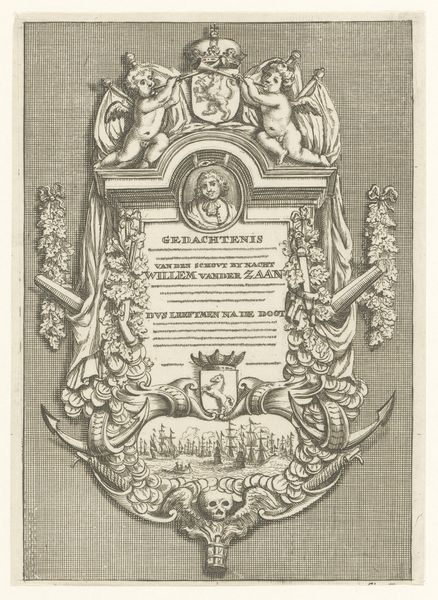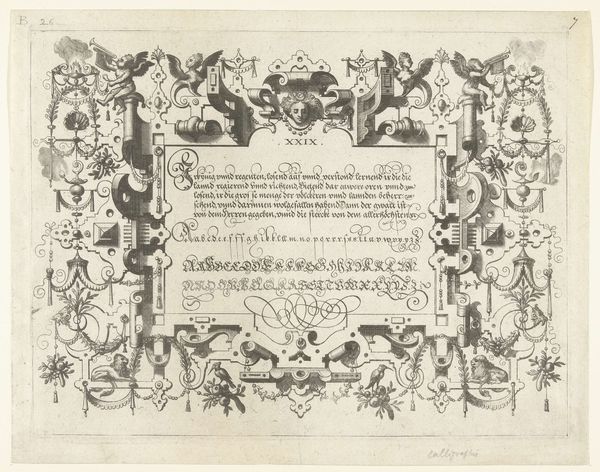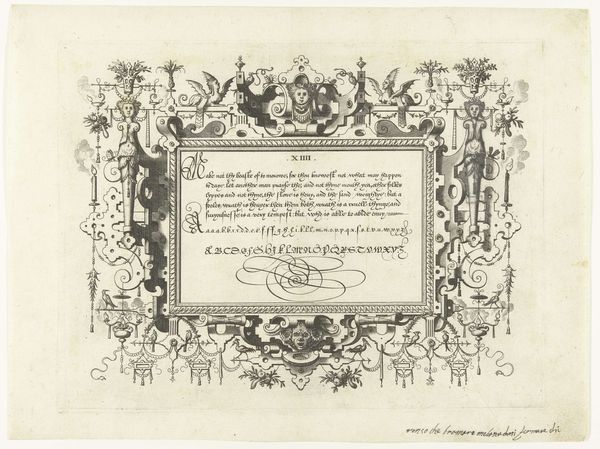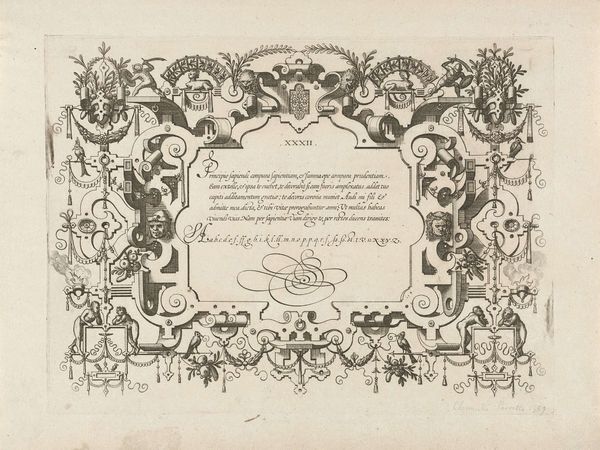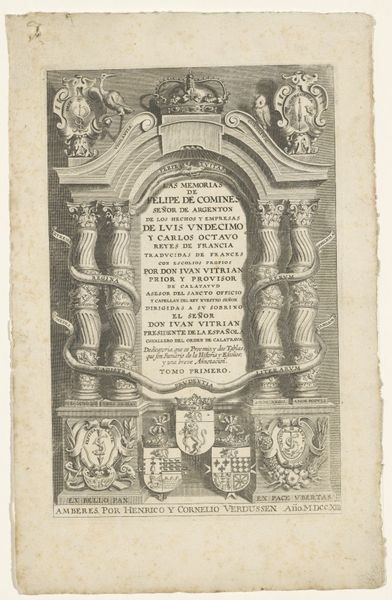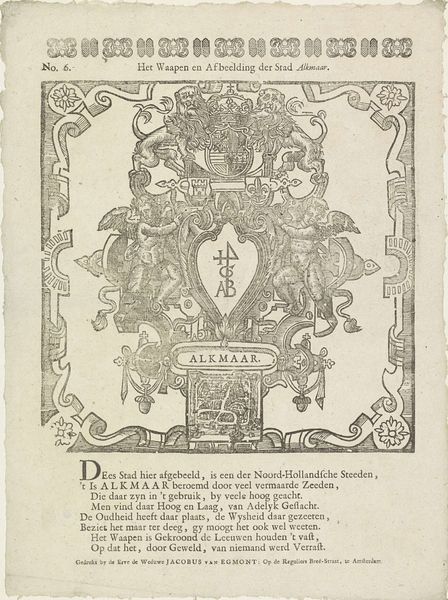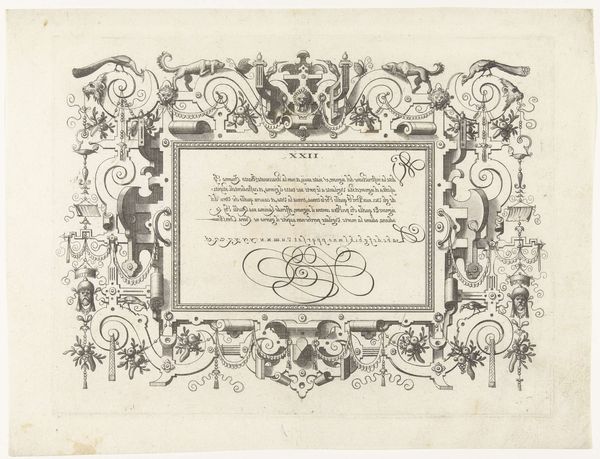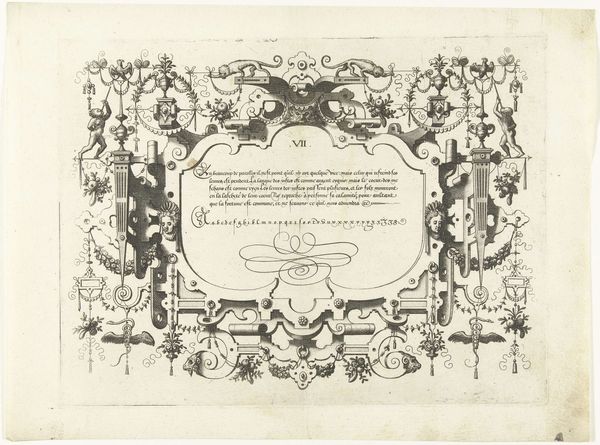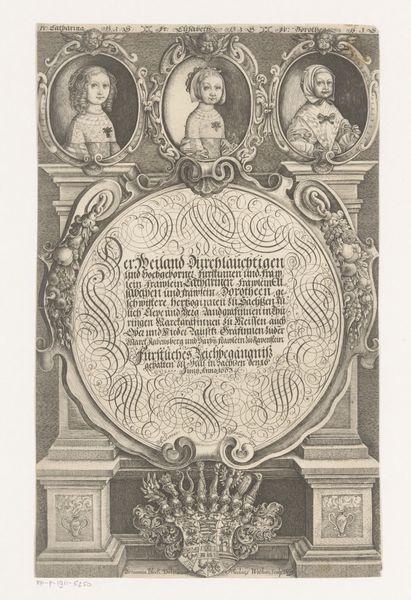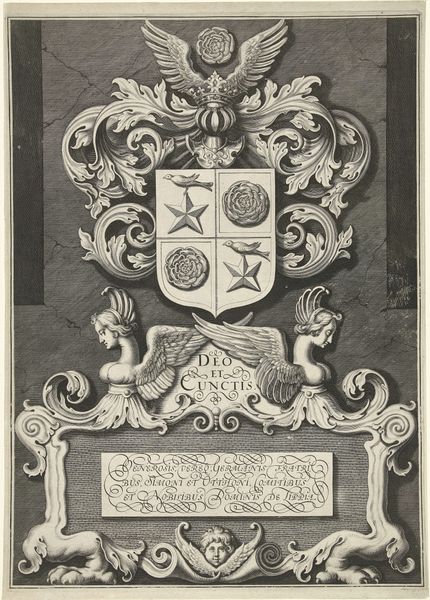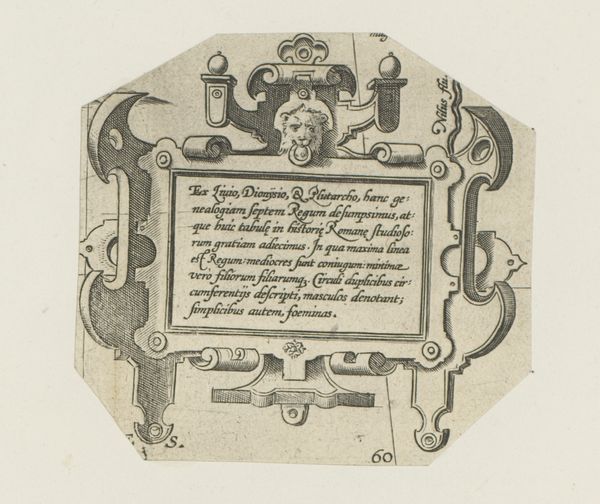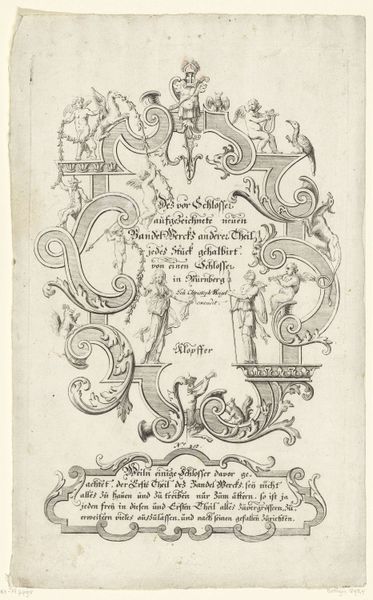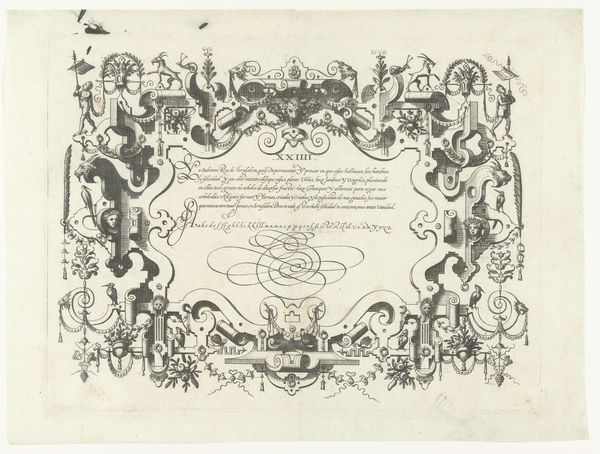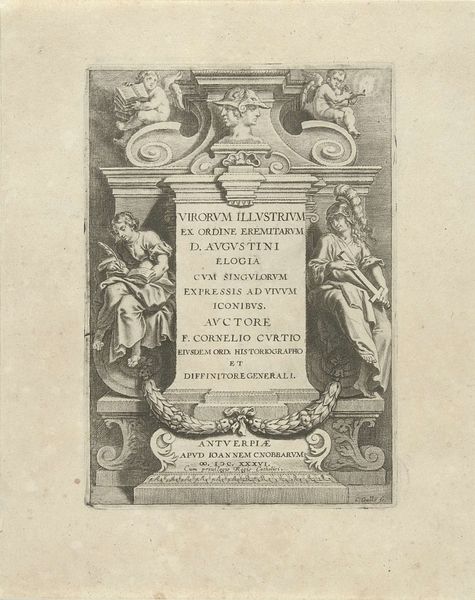
print, engraving
#
narrative-art
# print
#
pen illustration
#
pen sketch
#
old engraving style
#
figuration
#
line
#
history-painting
#
northern-renaissance
#
engraving
Dimensions: height 224 mm, width 155 mm
Copyright: Rijks Museum: Open Domain
Curator: What strikes me about this engraving is its miniature intensity. So much drama crammed into a tiny space, like a whole world shrunk down and viewed through the wrong end of a telescope. Editor: Exactly. Here we have "Elf medaillons met bijbelse voorstellingen", which translates to "Eleven medallions with biblical scenes", a print made in 1592 by Frans Hogenberg. What’s compelling is how it uses the print medium to circulate these potent, didactic narratives to a wide audience. It’s early mass media meets religious instruction, printed on paper for the people. Curator: There's a devotional quality, yes, but also something playful about the intricate frames. Like a jeweled box containing sacred treasures. It draws you in. Do you see that Adam and Eve on the upper-left? You could lose yourself in their tale as it repeats elsewhere. The fall, then crucifixion, then salvation. And it’s not just reading a text, it’s meditating through images. Editor: But who was this “mass” exactly? Given the Dutch inscription filling most of the composition, the immediate audience would have been literate burghers or wealthy merchants in the Dutch-speaking world. Someone had to be able to read it, which signals both a privileged audience and the accessibility that comes from printing vernacular languages and breaking away from exclusively Latin texts. Curator: A very fine point. Though that text--it's fascinating isn't it? The decorative frame that houses that eulogy, with scenes all about redemption, seems to almost soften the blow. Like beauty can always rise again. Editor: This isn’t about creating an object of autonomous beauty, of course. Rather it’s about conveying and enshrining specific stories with these materials. That’s why each circular scene, each inscription, needs to be meticulously produced, a testament to the craftsman's faith in his craft. Curator: Faith--that’s it exactly! It's about believing in what the materials transmit to you. Each tiny scene glows with its own fervent hope. You look close enough and the etching vibrates, still whispering after all these years. Editor: That's the resonance of its material presence and impact that goes on far beyond the workshop. We are still able to contemplate it, here.
Comments
No comments
Be the first to comment and join the conversation on the ultimate creative platform.
